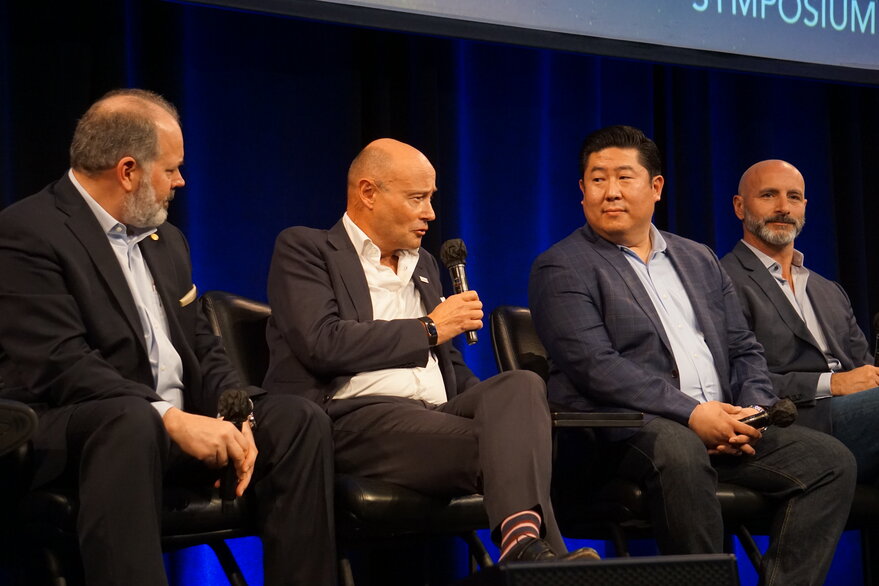MOUNTAIN VIEW, Calif. – Many satellite constellation developers are opting to build their own satellites.
Over the last year, the number of constellations relying on in-house manufacturing jumped from 32 percent to 43 percent, Brad Grady, Northern Sky Research principal analyst, said at the SmallSat Symposium.
In many cases, firms decide to build their own satellites to maintain control of their intellectual property and to ensure they can meet ambitious production schedules. Still, companies have to decide how much to build in-house, Grady said. Do they need to become as vertically integrated as SpaceX?
Large satellite communications constellations, including Amazon’s Project Kuiper, Kepler Communications, OneWeb and SpaceX Starlink, are opting for in-house manufacturing. In contrast, Telesat selected Thales Alenia Space to build its Lightspeed broadband constellation.
The Airbus OneWeb Satellites joint venture produces two satellites a day for the OneWeb constellation, said Russ Matijevich, Airbus US Space and Defense chief growth officer.
Airbus also fields inquiries from companies interested in purchasing satellites from its manufacturing line. As a result, Airbus is thinking like an automotive manufacturers that produce a new car model every year.
“You have to be very strategic in what you’re going after to keep the factory full and keep the factory producing,” Matijevich said.
On the Earth-observation front, more companies are outsourcing satellite construction, Grady said.
Planet, Satellogic and Spire Global build their own satellites. Additional firms are keeping construction in the family.
Tyvak Nano-Satellite Systems is building synthetic aperture radar satellites for PredaSAR. Both Tyvak and PredaSAR are Terran Orbital subsidiaries.
LeoStella produces Earth imaging satellites for BlackSky. LeoStella is a joint venture of Thales Alena Space and Spaceflight Industries, BlackSky’s parent company before its merger with a special purpose acquisition company that led to its recent public stock listing.
Some companies that start out manufacturing their own satellites later regret the decision, said Marco Villa, Tyvak chief revenue officer.
After building 10 satellites in-house, some industry executives realize they need to alter the design for the next generation. At that point, they either invest in new production capabilities or turn to a vertically integrated satellite manufacturer.
“Every single company is going to make the evaluation based on how much money they can raise and what is their core value proposition,” Villa said.
Firms that focus on manufacturing satellites like Tyvak and Millennium Space Systems build a variety of satellites.
“We designed our factory from the get go to be very flexible,” said Jason Kim, Millenniums Satellite Systems CEO. “We build about 80 percent of the products that go into our spacecraft. Those are the building blocks that can be assembled for different missions of different sizes with different reliability levels.”
